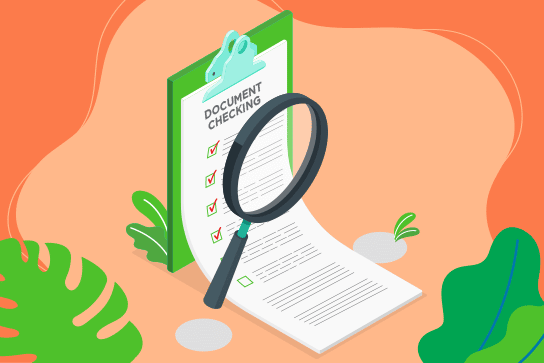LISTEN AUDIO
Last Updated on April 8, 2023 by Ozlinks Education
Subject: Develop menus for special dietary requirements
This unit code SITHKOP004 describes the performance outcomes, skills and knowledge required to develop menus and meal plans for people who have special dietary needs for health, lifestyle and cultural reasons. It requires the ability to identify the dietary requirements of customers, develop special menus and meal plans to meet those requirements, cost menus and to monitor and evaluate the success of menu performance.
The unit applies to all hospitality and catering organisations that prepare and serve food. This includes hotels, clubs, restaurants, educational institutions, health establishments, defence forces, cafeterias, kiosks, cafes, residential caterers, in flight and other transport caterers, event and function caterers.
It applies to those people who operate independently or with limited guidance from others such as senior cooks, chefs, catering supervisors and managers.
Elements and Performance Criteria.
Elements describe the essential outcomes. Performance criteria describe the performance needed to demonstrate achievement of the element.
1. Identify menu requirements.
1.1 Identify dietary and cultural or religious menu requirements of different customer groups.
1.2 Assess contemporary dietary trends and regimes.
1.3 Liaise with other professionals to identify and confirm customer requirements.
1.4 Identify health consequences of ignoring special dietary requirements of customers.
2. Develop menus and meal plans for special diets.
2.1 Select a variety of suitable foods and meals for specific requirements.
2.2 Identify appropriate combinations of food to meet macro and micronutrient requirements.
2.3 Develop menus and meal plans that promote good health and reduce the incidence of diet related health problems.
2.4 Prepare cyclic menus and balance nutritional requirements and variety.
2.5 Incorporate sufficient choice of dishes into the menus.
2.6 Recommend food preparation and cooking methods to maximise nutritional value of food.
3. Cost and document special menus and meal plans.
3.1 Calculate expenditure items to determine production costs of menu items.
3.2 Calculate portion yields and costs from raw ingredients.
3.3 Assess cost-effectiveness of proposed dishes against budgetary constraints and choose products that provide high yield.
3.4 Use correct terminology in menus and meal plans.
4. Monitor special menu performance.
4.1 Seek ongoing feedback from customers and others and use to improve menu performance.
4.2 Analyse the success of special menus against dietary goals and customer satisfaction.
4.3 Adjust menus based on feedback and success.
Assessment Requirements.
Performance Evidence.
Evidence of the ability to complete tasks outlined in elements and performance criteria of this unit in the context of the job role, and:
- develop and cost at least six menus or meal plans that individually or in combination meet at least six different special dietary requirements as specified in the knowledge evidence.
- two of the above menus or meal plans must reflect one or more cultural or religious dietary requirements as specified in the knowledge evidence.
- two of the above menus or meal plans must address the special dietary requirements of different customer groups as specified in the knowledge evidence.
- evaluate each of the above menus by obtaining at least two of the following types of feedback:
- customer satisfaction discussions with customers, employees during the course of each business day
- customer surveys
- improvements suggested by customers, managers, peers, staff, supervisors, suppliers.
- regular staff meetings that involve menu discussions.
- satisfaction discussions with customers, allied health professionals, dietitians, medical specialists.
- seeking staff suggestions for menu items.
- develop above menus and menu plans within commercial time constraints, demonstrating:
- methods for responding to feedback and adjusting menus.
- basic principles and practices of nutrition.
Knowledge Evidence.
Demonstrated knowledge required to complete the tasks outlined in elements and performance criteria of this unit:
- culinary terms and trade names for:
- substitute ingredients used to produce dishes with special dietary recipes
- ingredients suitable for meeting basic nutritional needs
- ingredients that cause common allergic reactions
- food additives and preservatives
- main types and culinary characteristics of special diets that are part of contemporary Australian society:
- eating regimes: elimination, macrobiotic
- exclusions for allergies, contraindications with medicines or food intolerance
- fat-free
- fluids
- food preferences
- food restrictions
- gluten-free
- high carbohydrate
- high or low energy
- high or low protein
- high fibre
- lacto ovo
- low carbohydrate
- low cholesterol
- low fat
- low gluten
- low kilojoule
- low sugar
- modified sodium or potassium
- modified texture
- nutritional requirements
- portion size
- substitutes: gluten-free flour, yeast-free flour, non-sugar sweeteners
- sugar-free
- type one and two diabetes
- main types and culinary characteristics of cultural or religious diets that are part of contemporary Australian society:
- halal
- Hindu
- kosher
- vegan
- vegetarian
- main types of customer groups that have special dietary requirements:
- adolescents
- athletes
- children
- defence forces
- elderly
- health care
- ill or injured
- infants
- international tourists
- nutritional and energy requirements due to physical condition.
- people in areas affected by disaster or environmental extremes.
- people from different socioeconomic groups.
- people in remote areas.
- those with weight problems: underweight, overweight, obese.
- meaning of:
- drug-food interactions
- food allergy
- food intolerance
- key health and legal consequences of failing to address special requirements:
- allergic reactions
- anaphylaxis
- food sensitivity or intolerance reactions
- basic principles and practices of nutrition:
- nutrients and their food sources
- influences on food choice
- food and beverage selection influences
- food labelling and interpretation
- role and implications of using food additives and preservatives.
- health implications of food choices
- role of good nutrition in avoiding dietary diseases
- effects of various cooking methods and food storage on nutrients
- primary components of Australian Dietary Guidelines, in particular those for older Australians, children and adolescents and their use in menu planning.
- methods and formulas for calculating portion yields and costs from raw ingredients:
- butcher’s test
- standard measures
- standard yield tests.




